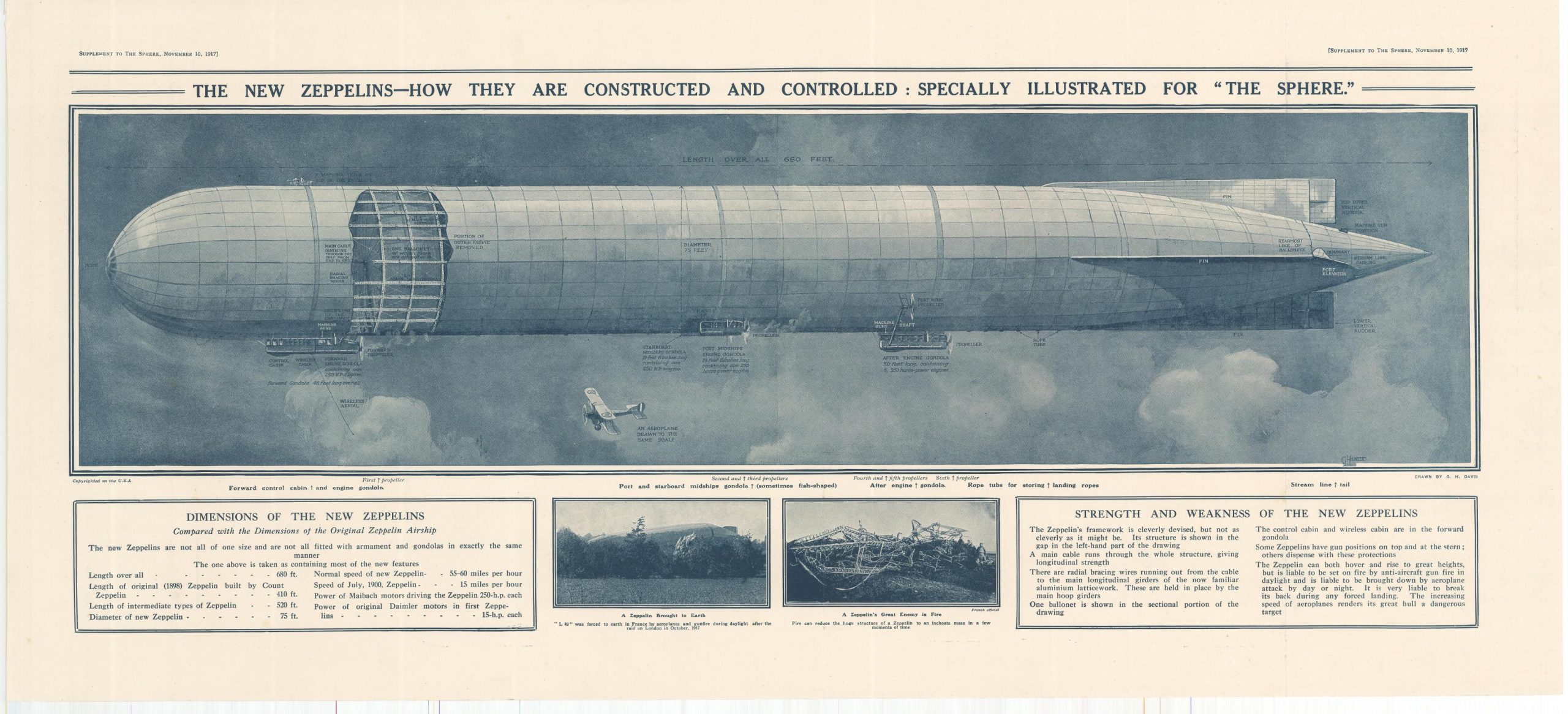The New Zeppelins – How they Are Constructed and Controlled : Specially Illustrated for “The Sphere”
$350.00
Illustrated diagram of the Zeppelin R-Class published for a British audience during World War I.
1 in stock
Description
This informative illustration of Germany’s Zeppelin airship was designed by G.H. Davis and published as a supplement to the November 10, 1917 edition of The Sphere, a London-based periodical. The first Zeppelin (LZ-1) took flight in 1900, followed shortly by the introduction of the world’s first commercial air service. With the outbreak of World War I, the airships were converted to military purposes and used to bomb the cities of Great Britain by early 1915.
Initially, defenses were limited and the aerial assaults were successful in inflicting damage, casualties, and terror on English residents. But by the middle of 1916, city-wide blackouts, improved fighter capability (including higher ceilings of operation and incendiary ammunition), and radar jamming rendered the Zeppelins increasingly ineffective. Efforts were made to improve their operational potential, and the graphic highlights the introduction of a new type of Zeppelin – likely the ‘R-Class.
Despite its massive size (680 ft), increased power, and formidable defenses, outlined in the table in the lower left, the image does much to portray the airship as vulnerable. Two captioned photographs in the lower center show wreckage of the LZ-49 and an unnamed Zeppelin, while a box immediately to the right describes the strengths and weaknesses. “The Zeppelin’s framework is cleverly devised, but not as cleverly as it might be.”
The primary image shows the various components from the nose to the streamlined fairings covering the tail. The control and wireless radio cabins are situated aft, with two additional gondolas also powering propellors (six in total) with 250 horsepower Maibach engines. In addition to machine guns in all three gondolas, there are also emplacements at the top and near the tail of the ship, though these would often be discarded to increase the height at which the Zeppelin could operate. An Allied fighter is also shown for scale – in black and white the roundels of the RAF and Armée de l’Air are indistinguishable.
Taken as a whole, the sheet would have likely been of some comfort to the British audience of The Sphere during the weary days of World War I. It does much to explain how the lumbering menace operates and highlights the vulnerabilities of airships while operating in hostile territory. The responding defensive efforts would see Germany largely abandon the Zeppelin bombing campaigns in favor of the Gotha bombers by the end of the year.
Sources: Zeppelin History; Imperial War Musuems; Historic UK
Map Details
Publication Date: 1917
Author: G.H. Davis
Sheet Width (in): 31.5
Sheet Height (in): 13.9
Condition: A
Condition Description: Lightly creased along originally issued fold lines and faint wear along the outer edges of the sheet. Near fine condition overall.
$350.00
1 in stock

